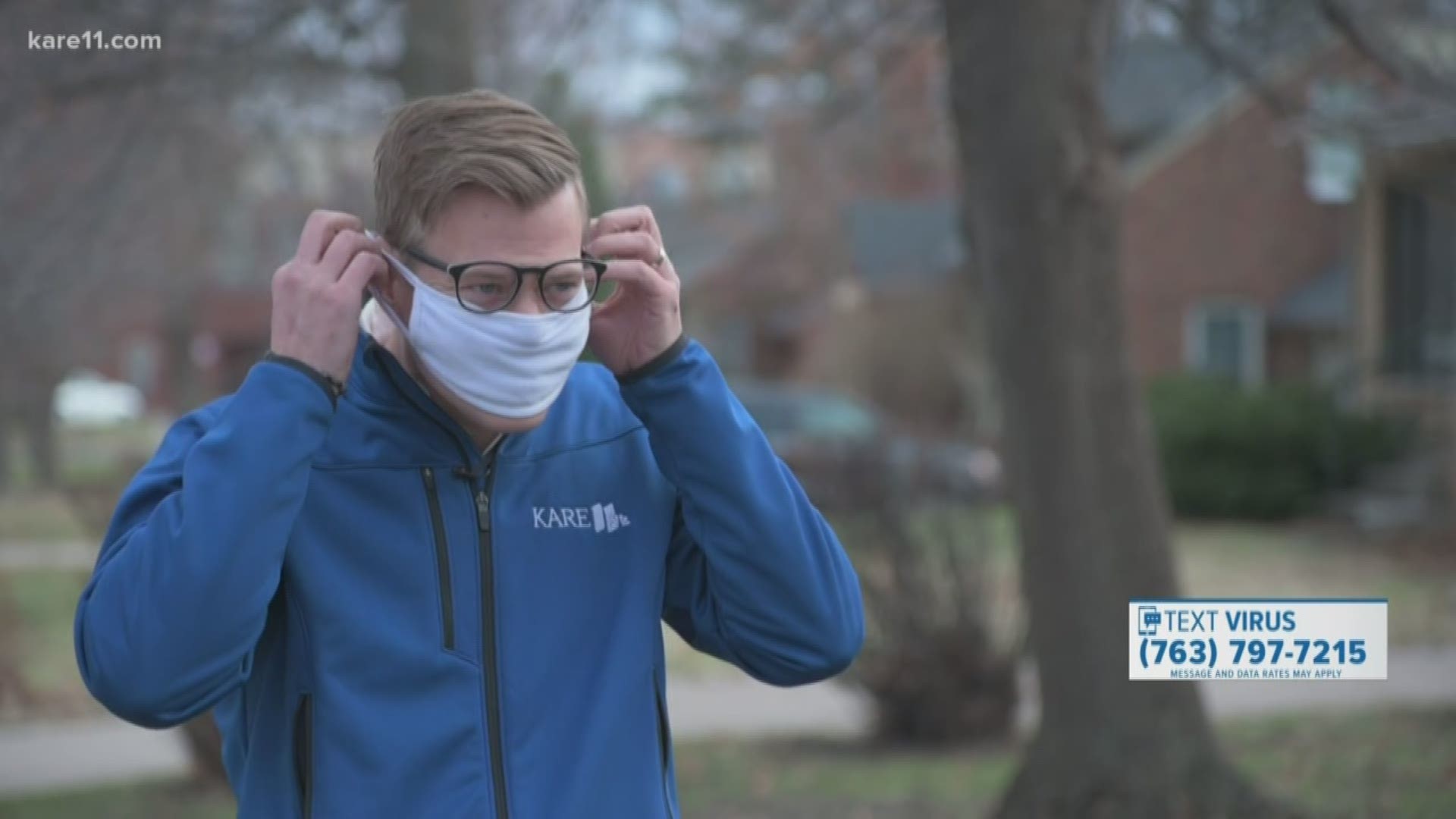Homemade masks and other face coverings could soon become a more common sight in public, as federal and state health officials consider expanding public guidance on facemasks in response to the Coronavirus.
"(A facemask) is not a bad idea when out in public, going to a grocery store, being around lots of other people," said Minnesota Health Commissioner Jan Malcolm, when asked about the shifting facemask guidelines on Wednesday.
For now, CDC guidelines still say: If you are not sick: You do not need to wear a facemask unless you are caring for someone who is sick. However, this week, CDC Director Robert Redfield said as many as 1 in 4 people who are infected show no signs of having the virus.
"One of the insidious characteristics of this virus is people who haven't shown any symptoms could be walking around and spreading this disease without knowing it," said Joe Kelly, Director of Minnesota Homeland Security and Emergency Management. "A homemade cloth mask could help prevent that kind of spread by what the experts call source control."
State and federal leaders are putting emphasis on homemade options, because they do not want to promote the purchase of medical-grade masks and other personal protective equipment that is currently in short supply across the country.
"I'm a little nervous because then people are going to be taking more of the masks away from the healthcare providers," said Doctor Natalie Ikeman, a family physician with Hennepin Healthcare. "We want to protect our healthcare workers by keeping the resources at the hospitals and the clinics were we need them most."
Making Masks
Rhonda Franklin is studying the effectiveness of homemade masks for the U of M's Institute for Engineering in Medicine. She says there are plenty of simple designs online that can offer some limited protection in a pinch.
"Try to find something that covers your nose and your mouth area and then something that loops around the ears, that keeps the mask fairly taught," Franklin said. "The CDC recommends using cotton. Ideally, you have a couple layers of fabric; one being cotton, the other consisting of flannel or fleece."
Franklin says other options like bandannas or scarves offer less protection but could also have at least one positive effect.
"You're trying to reduce the transferring of (the virus) from our hands to our bodies, and right now something is better than nothing," she said.
If you do opt for a homemade mask, experts say you'll want to wash it between uses and wash your hands after putting it on and taking it off.
Community Need For Homemade Masks
Minnesota leaders say homemade, reusable masks are also still needed for people inside congregate living facilities and other high exposure settings. If you have the ability to produce one for yourself, they ask that you help create more for your community.
"If you're kind enough to make cloth masks for donation, I suggest you distribute them locally," Kelly said, suggesting that you donate them to bus drivers, local jails, shelters and other locations. "It will help keep everybody healthy and safe. It also feels like a very Minnesotan thing to do."
KARE 11’s coverage of the coronavirus is rooted in Facts, not Fear. Visit kare11.com/coronavirus for comprehensive coverage, find out what you need to know about the Midwest specifically, learn more about the symptoms, and see what companies in Minnesota are hiring. Have a question? Text it to us at 763-797-7215. And get the latest coronavirus updates sent right to your inbox every morning. Subscribe to the KARE 11 Sunrise newsletter here. Help local families in need: www.kare11.com/give11.
The state of Minnesota has set up a hotline for general questions about coronavirus at 651-201-3920 or 1-800-657-3903, available 7 a.m. to 7 p.m.

